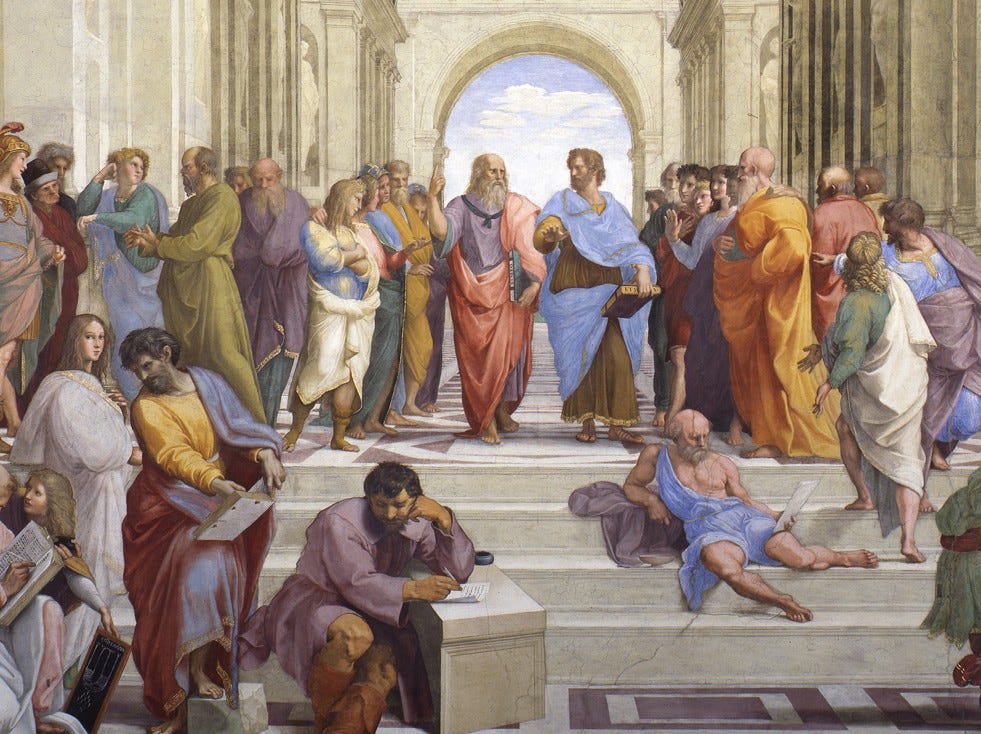Of narrative and rhetoric
The devaluation of political discourse
My topics today are narrative and rhetoric. These two terms from the world of literary technique—the first denoting the structure of a story and the second the art of persuasive speaking—have both taken on new clothing in the world of political discourse.
Rather than simply referring to the shape of a fictional story, ‘narrative’ is now more often applied to real-world storylines that support an ideological position, often with an element of ‘spin’ or bias.
This definition has its roots in cultural and literary theory from the end of the 20th century, when linguists and social scientists drew distinctions—whether actual or not—between what people mean and what they say.
But it has been popularized by the 21st century’s ‘culture wars’. Here are some examples:
“[He has been] backing far-right figures in America and around the world and posting dubious pro-Trump narratives.”
“This is how the entrenched ‘pro-Israel’ and ‘pro-Palestine’ narratives have been sustained for decades.”
“Democrats need to start controlling the narrative”
In the sense that these political narratives have a specific aim and direction of travel, they resemble stories, of course, so the borrowed definition has not strayed too far from its original sense.
With ‘rhetoric’, alas, it’s an entirely different story.
This word (from which we also get ‘oratory’) was until very recently applied to the sophisticated art of shaping language into a persuasive argument, through the use of certain ‘rhetorical devices’ —for example the tricolon, in which a word is repeated three or more times for effect:
“We shall fight on the beaches, we shall fight on the landing grounds, we shall fight in the fields and in the streets, we shall fight in the hills; we shall never surrender.”
Perhaps the most famous rhetorical device is the rhetorical question, which always expects, but does not require, the answer ‘No’:
“Can there be anyone untouched by the slow erosion of truth in our time?”
By the 2020s, however, such artful tricks were seen as elitist, the product of a classical education. It became popular to think of such academic use of language as ‘mere’ or ‘empty rhetoric’, i.e. ‘hot air’ or bombast: language that—far from persuading its audience, should be treated with suspicion:
“Critics say that the government’s rhetoric about inclusion hasn’t been matched by its policies”
As a result, ‘rhetoric’ has been even further devalued. It is now applied to any language used by anyone, no longer artfully fashioned but simply a yobbish shouting match, with insults being hurled left and right.
Here are some examples:
“UK charities say toxic immigration rhetoric leading to threats against staff”
“Could the Tories be seeking to benefit from the same anti-establishment rhetoric that Reform has, now that they’re no longer in power?”
In the first example above, what ‘rhetoric’ actually means is simply ‘insulting or abusive language’.
As a student of literature, I am sorry that both ‘rhetoric’ and ‘narrative’ have been devalued in this way. It seems to me that if politicians were to strive to order their language and their thoughts in a more reflective way, and not blurt out the first inanity that enters their flustered heads on morning television, we might trust them more.
It may well be that Blair’s famous tricolon ‘Education, education, education’ is what is really missing.




This is a very fine example of why you must continue to write. There are no examples left of thoughtful communication in a world devolved to the chattering classes. Well done...